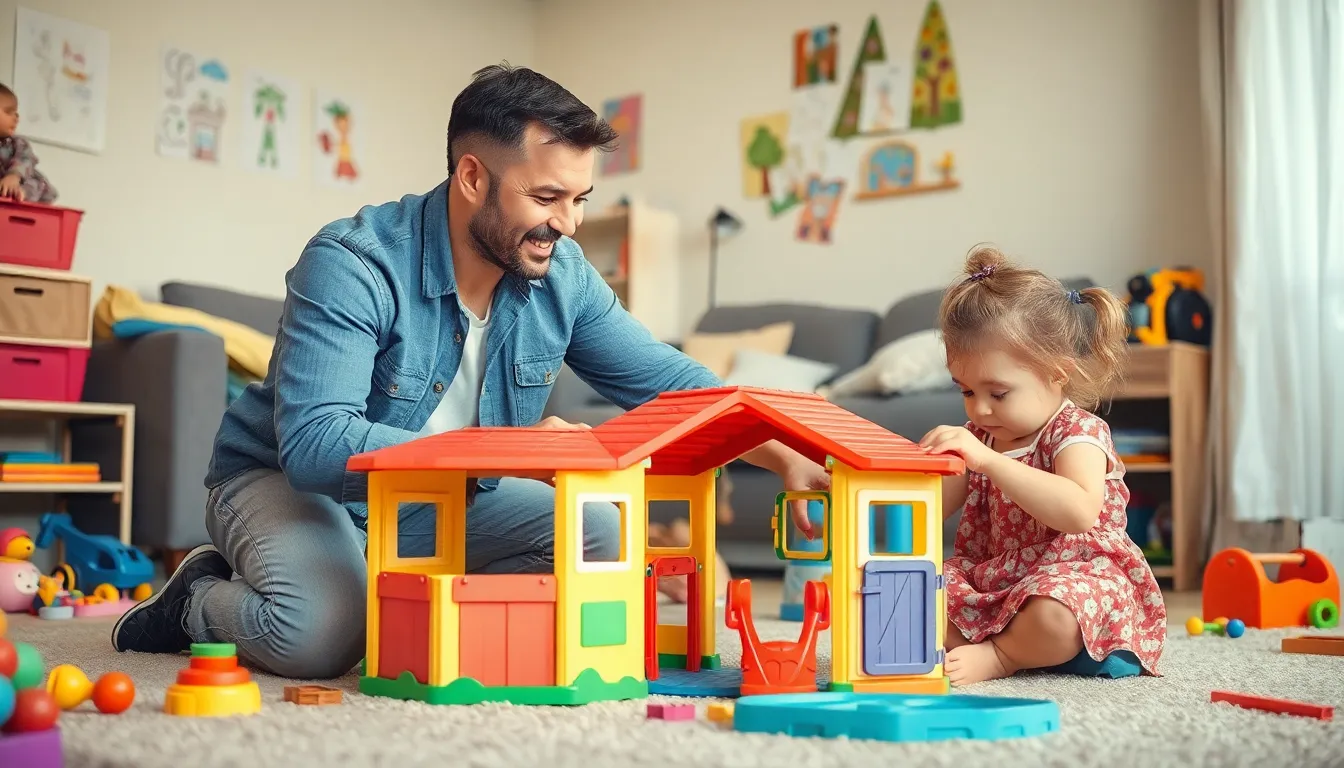Navigating the world of adoption can feel like a rollercoaster ride, complete with twists, turns, and the occasional loop-de-loop. But once the paperwork is done and the hugs are flowing, the next big adventure awaits: getting that shiny passport for the newest family member. After all, who wouldn’t want their adopted child to have the same opportunity to collect stamps from around the globe?
Table of Contents
ToggleUnderstanding the Need for a Passport for Adopted Child
Obtaining a passport for an adopted child is crucial for facilitating travel. Traveling broadens horizons, allowing them to experience different cultures. A passport also serves as an essential legal document for identification during international journeys.
Citizenship dictates the type of passport an adopted child receives. For children adopted from abroad, specific documentation demonstrates the adoption’s legal status. International adoption requires adherence to children’s travel regulations, which vary depending on their country of origin.
Countries typically mandate that children possess their own passports. Presenting proof of adoption alongside the child’s birth certificate is necessary when applying. This evidence affirms the legal relationship between the adoptive parents and the child.
Ensuring timely application for a passport is vital as travel plans often arise unexpectedly. The processing time for passports can range from several weeks to months. Online resources help streamline the application process, allowing families to stay informed about requirements and timelines.
Bringing children abroad presents opportunities for personal growth and strengthens family bonds. Traveling contributes to social skills development and cultural awareness. Accessibility to passports enables adopted children to enjoy these experiences just like any other child.
Traveling internationally may also require additional documentation, such as a visa. Knowing each destination’s entry requirements streamlines the journey for families. Being proactive in gathering necessary documents helps create a smoother travel experience.
Eligibility Criteria
Eligibility criteria for obtaining a passport for an adopted child depend on the specific circumstances surrounding the adoption process. Documentation varies based on whether the adoption was domestic or international.
Requirements for Domestic Adoption
In domestic adoptions, parents must provide a finalized adoption decree. A birth certificate, showing the child’s new legal name, is also required. Proof of citizenship is essential; thus, parents should include a certificate of citizenship or a naturalization certificate if applicable. Additional forms of identification, like a government-issued ID of the adoptive parents, can assist in establishing the parents’ identities. It’s crucial to compile these documents before initiating the passport application process.
Requirements for International Adoption
International adoptions involve specific criteria for passport applications. Parents need the finalized adoption decree and the child’s birth certificate, along with their Certificate of Citizenship, which verifies the child’s citizenship. A home study report may also be necessary, as it documents the family’s readiness to adopt. Valid identification, such as a passport or driver’s license from the adoptive parents, must accompany the application. Ensuring all documents are in order streamlines the passport application, facilitating smoother international travel for the adopted child.
Application Process
The application process for a passport for an adopted child requires specific documentation and steps. Parents must prepare thoroughly to ensure a smooth experience.
Required Documentation
Finalized adoption decrees must be included in the application. A birth certificate reflecting the child’s new legal name and proof of citizenship supports the application. Additional items like identification for both the child and adopting parents may also be necessary. For international adoptions, a home study report documents the family’s preparedness for adoption. Authorities may request additional evidence, such as legal residency if applicable. Gathering all required documentation ahead of time streamlines the application process, reducing delays.
Steps to Apply
First, parents must complete the passport application form, known as Form DS-11. Next, they must submit the required documentation, including the finalized adoption decree and the child’s birth certificate. Parents must provide a passport photo that meets specific size and quality standards. In-person submission at a designated acceptance facility is required. Payment for the passport fee usually follows, which varies depending on processing speed. Lastly, tracking the application ensures awareness of the processing timeline, which can take several weeks or even months.
Common Challenges
Navigating the passport process for an adopted child presents numerous challenges. Various legal considerations and emotional factors come into play.
Legal Considerations
Resolving legal matters ranks as a priority during the passport application process. The finalized adoption decree serves as essential documentation to establish legal custody. Additionally, the child’s birth certificate must reflect the new legal name. Proof of citizenship is also necessary, ensuring that the child meets eligibility criteria. Parents must not overlook any requirements specific to international adoptions, such as incorporating a home study report. Gathering all pertinent documents before submission helps streamline the process. Understanding these legalities mitigates potential delays and complications.
Emotional Factors
Emotional aspects affect both parents and children when applying for a passport. Adaptations to a new identity can provoke feelings of anxiety or uncertainty in adopted children. Their understanding of citizenship and travel may also be limited, requiring parents to provide reassurance. Parents may experience stress due to the complexity of the process and the importance of passport acquisition for family travel. Supporting children through this transition fosters a sense of security. Creating an open dialogue about feelings and expectations can also ease tensions, enabling a smoother experience for everyone involved.
Tips for a Smooth Application
Prepare essential documents early. A finalized adoption decree along with the child’s birth certificate is crucial. Include proof of citizenship, which is necessary for both domestic and international applications. Parents should also gather identification for themselves and the child, as this can streamline the process.
Complete Form DS-11 accurately. Each question on the form requires careful attention to detail. Ensure to provide correct information to avoid delays. Submitting the application at a designated acceptance facility is the next step. This may require an appointment, so checking availability beforehand aids in reducing wait times.
Provide a passport photo that meets the U.S. Department of State’s requirements. Specific size requirements and background color must be followed. Following these guidelines ensures the photo won’t be rejected and causes further delays.
Track the application status regularly. Processing times can vary from a few weeks to several months, depending on the type of application and current demand. Staying informed helps set expectations and plan any upcoming travel accordingly.
Address legal considerations early. Ensure that all legal documents reflect the child’s new name as adopted. Conflicts in documentation could lead to complications in the passport application process.
Support the child emotionally throughout this procedure. Open communication can ease any anxieties they may have about their identity and the transition. Acknowledging their feelings and providing reassurance can strengthen the parent-child bond during this time.
Conclusion
Navigating the passport application process for an adopted child can be a pivotal step in their journey. It not only opens doors to travel but also enriches their experience of the world. By understanding the specific requirements and preparing the necessary documentation, parents can ensure a smoother process.
Supporting the child emotionally during this transition is equally important. As they adapt to their new identity and the excitement of travel, fostering open communication can help ease any anxieties. Ultimately, obtaining a passport is more than just a legal formality; it’s a gateway to adventure and a chance to create cherished family memories.







